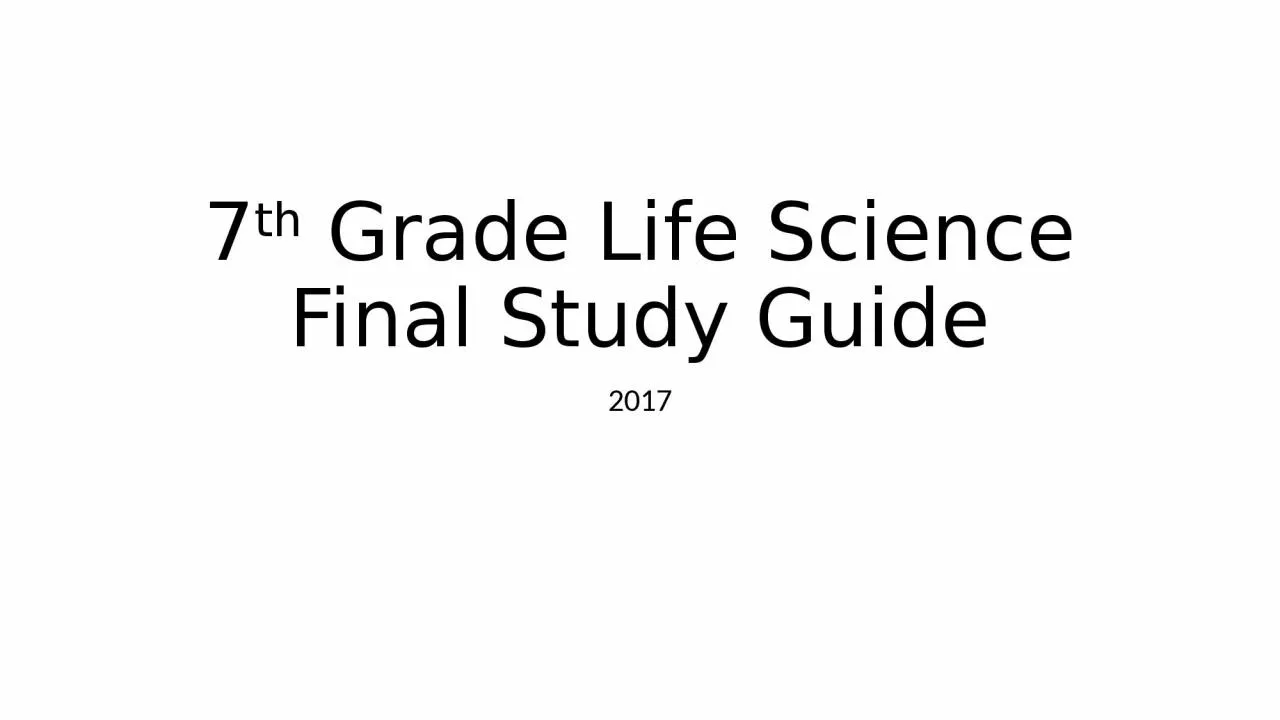

2017 The chemical equation for photosynthesis c arbon dioxide water light energy glucose oxygen The chemical equation for aerobic cellular respiration glucose oxygen c arbon dioxide water usable energy ID: 1000004
Download Presentation The PPT/PDF document "7 th Grade Life Science Final Study Gui..." is the property of its rightful owner. Permission is granted to download and print the materials on this web site for personal, non-commercial use only, and to display it on your personal computer provided you do not modify the materials and that you retain all copyright notices contained in the materials. By downloading content from our website, you accept the terms of this agreement.
1. 7th Grade Life Science Final Study Guide2017
2. The chemical equation for photosynthesis:carbon dioxide + water + light energy glucose + oxygen
3. The chemical equation for aerobic cellular respiration:glucose + oxygen carbon dioxide + water + usable energy
4. PART II TRUE/FALSEAll living things do aerobic cellular respirationOnly plants do aerobic cellular respirationOnly animals do aerobic cellular respirationAll living things except plants do aerobic cellular respiration
5. PART II TRUE/FALSEElodea cells and human cheek cells are single-celled organismsElodea cells and human cheek cells are part of multicellular organismsElodea cells and human cheek cells have chloroplastsElodea cells and human cheek cells do not have a nucleus
6. PART II TRUE/FALSEPhotosynthesis and cellular respiration occur only in plantsPhotosynthesis occurs only in plants, and cellular respiration occurs only in animalsPhotosynthesis occurs in both plants and animalsPhotosynthesis occurs only in plants, and cellular respiration occurs in both plants and animals
7. PART III Vocabulary fill in the blankAerobic cellular respiration turns glucose into usable energy.The stems and leaves in a plant are examples of plant organs.Guard cells control the size of the openings in leaves.The openings in the leaves of plants that regulate gas exchange are called stomata.Photosynthesis takes place in the chloroplasts of the cell.
8. PART IV Describe ProcessesWhen there is little water in the atmosphere, stomata most likely close.The function of xylem in a plant is to transport water to all parts of the plant.The purpose of photosynthesis is to make sugars.Transpiration is an important process in a plant because it delivers water to every cell in the plant.Bacteria and archaea are similar because both are prokaryotes.
9. PART V Explain QuestionsHow do plant cells that do not have chlorophyll get food? Phloem carries food from the leaves to all the cells in a plant.What is the most significant difference between bacteria and eukaryotes? Eukaryotic cells have a nucleus.How is transpiration related to photosynthesis? Transpiration delivers water needed for photosynthesis to the cells.Mushrooms are part of which domain? Eukaryotes
10. PART V Explain QuestionsWhy is photosynthesis important to animals? Plants use photosynthesis to make food that animals can eat.What is the range of the number of cells that living organisms can be made of (from the very smallest to the very largest)? One to many millionsPhotosynthesis uses energy from the Sun to make sugars such as glucose. What has to happen to the glucose before it can be used by plant cells? The glucose combines with oxygen to make usable energy.